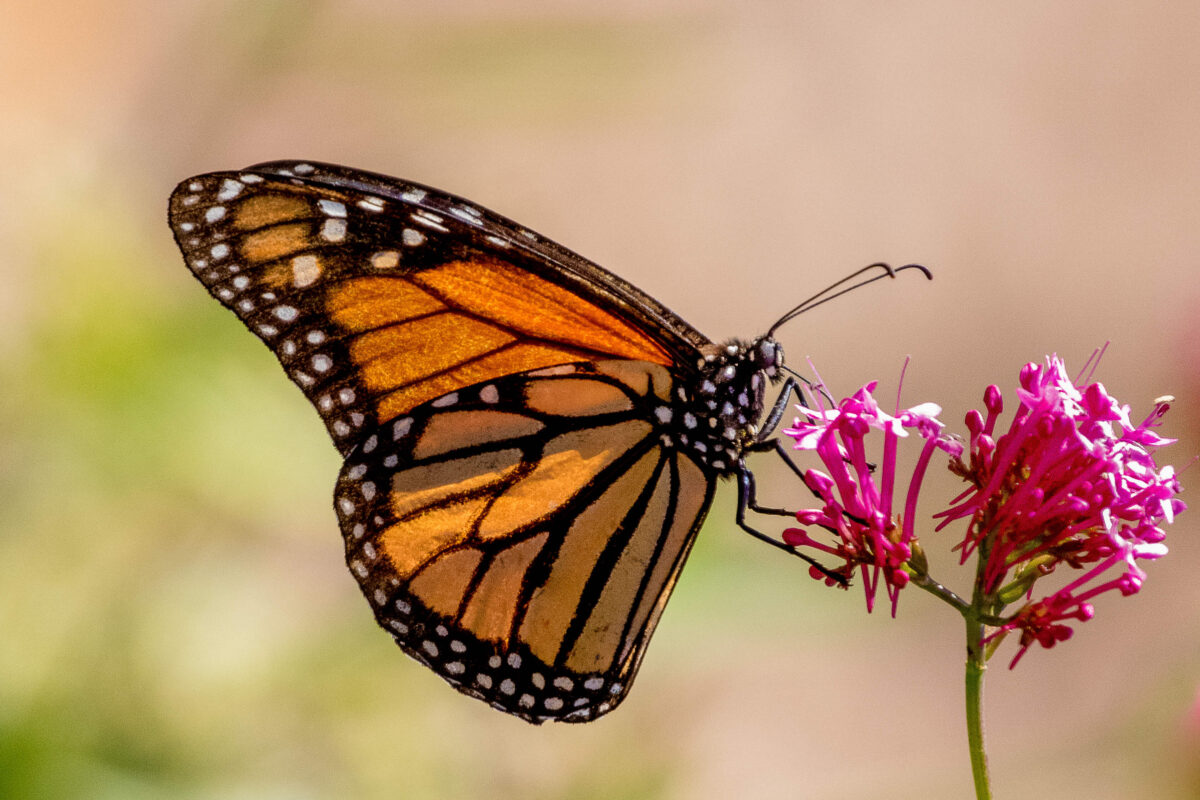One of the joys of nature photography is exploring the dazzling palette of living colors. This is particularly true in spring. Following the rains, the golden tones of winter give way to a burst of color as flowers and butterflies re-emerge. This free show is on display in the gardens, parks and open spaces of the Peninsula.
(Photo above)
Monarch butterflies (Danaus plexippus) have always been a personal favorite as much for their epic migration as for their striking colors. In the case of monarchs, this color is an example of aposematism or warning coloration. Like a delicate tiger, these colors say, “Beware!” In short, monarchs are poisonous to would-be predators.
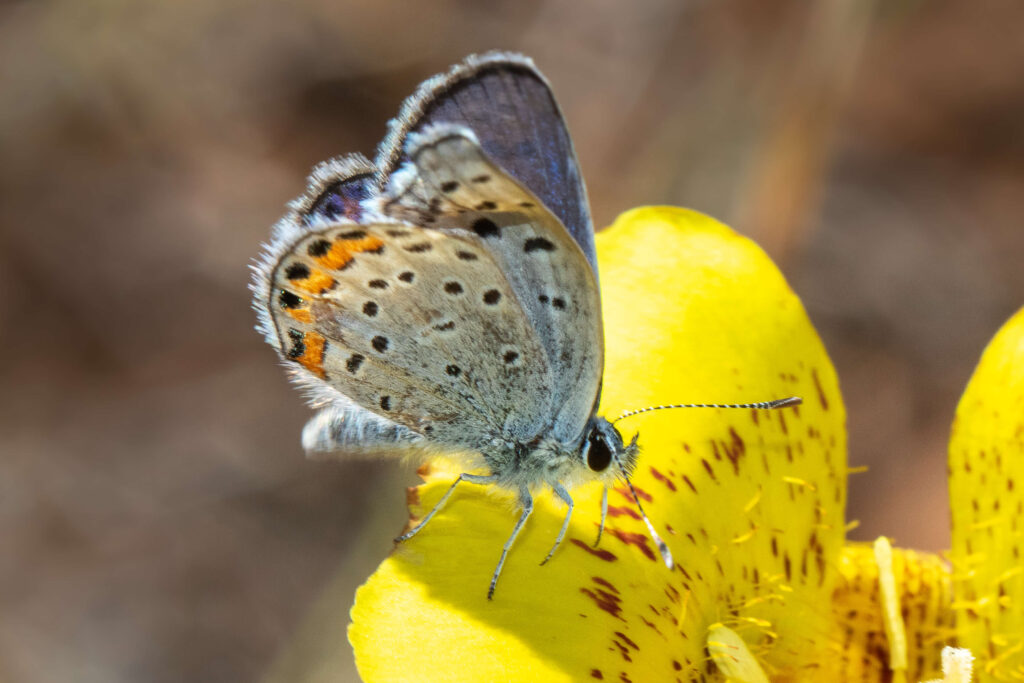
In the case of this vibrant mariposa lily (Calochortus luteus) at Edgewood Park, the color is sending a very different message. It says to the acmon blue (Icaricia acmon), “Come taste my nectar.” The butterfly gets a meal and the flower is using the butterfly as a pollinator.
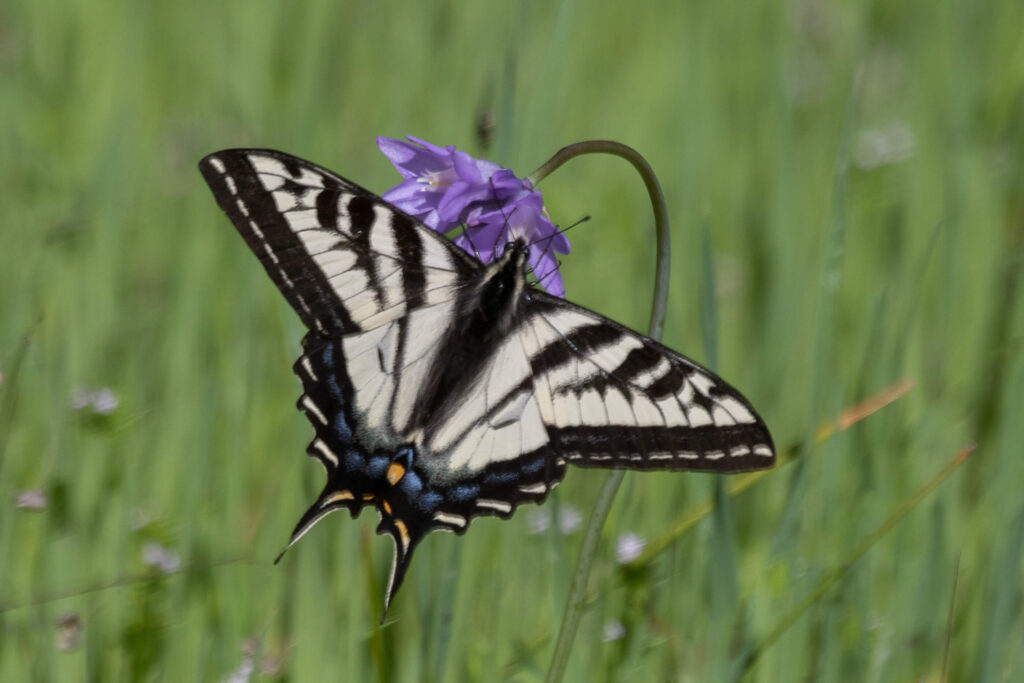
The pallid swallowtail (Papilio eurymedon) is common throughout western North America. Its genus name means “butterfly” in Latin and is reminiscent of the French word for butterfly. Befitting the name, the members of this charismatic genus can be found across the globe, including this cooperative individual at Jasper Ridge.
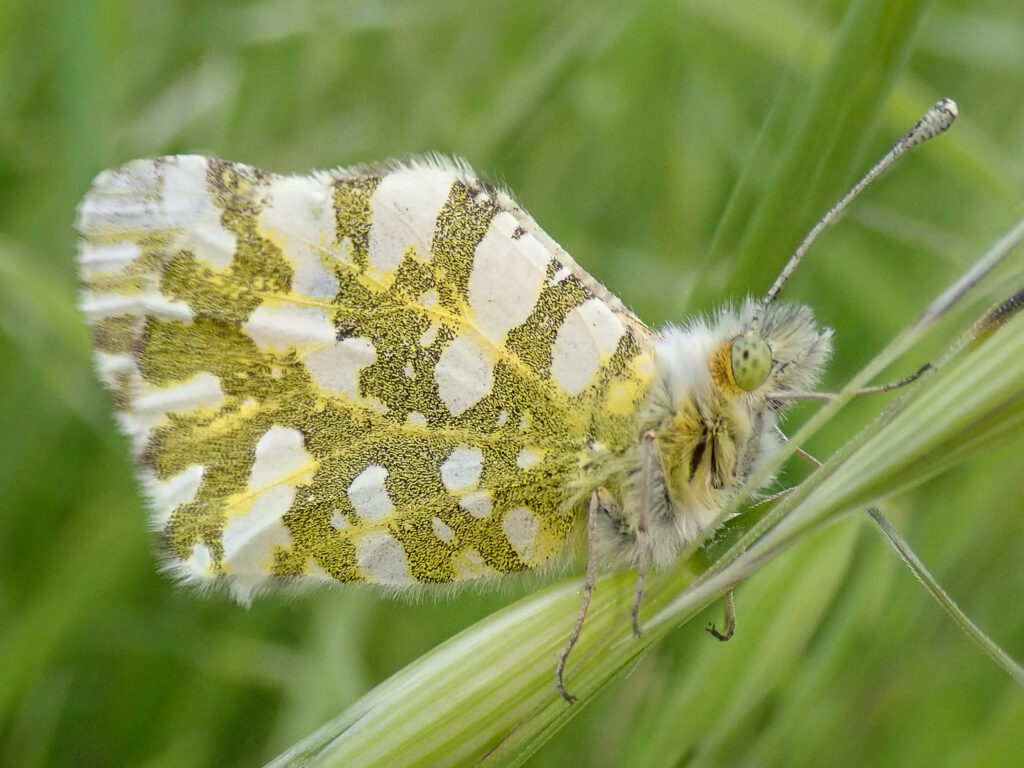
Beyond the camera, the internet provides valuable tools for the nature photographer. Particularly useful is the citizen science program, iNaturalist, which combines artificial intelligence with an online community to help identify organisms large and small. Though camouflaged among the grass at the Stanford Dish, this large marble butterfly (Euchloe ausonides) is easily identified online.
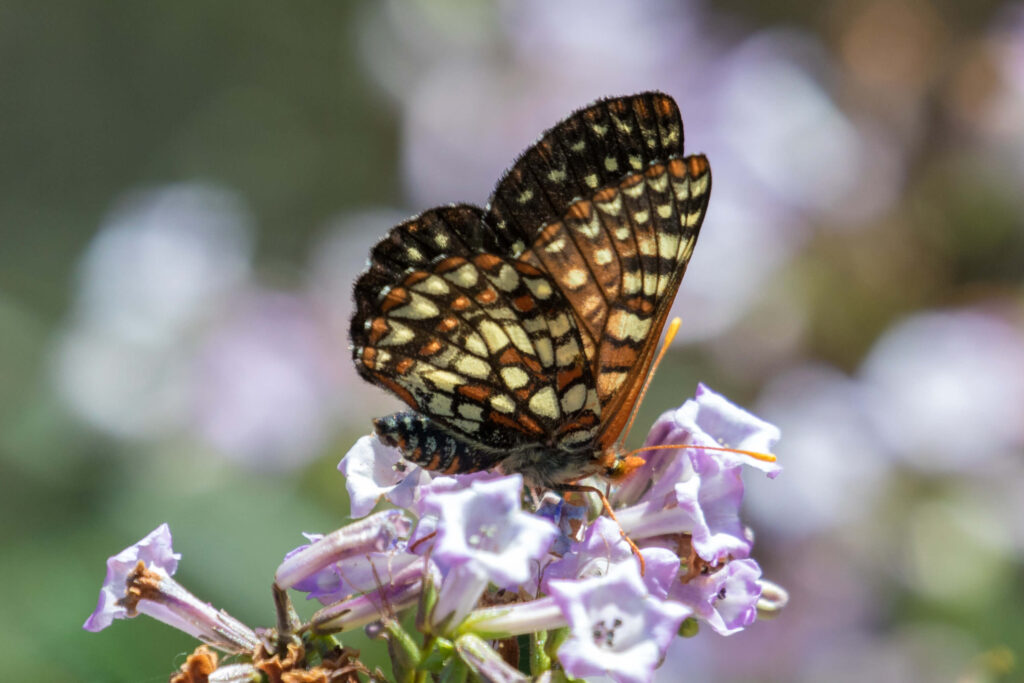
The appropriately named variable checkerspot (Euphydyas chalcedona) is feeding on yerba santa at Jasper Ridge. The variable checkerspot has managed to thrive in the Bay Area. Meanwhile, the populations of its close relative, the bay checkerspot (Euphydryas editha bayensis) have been in serious decline due to factors related to climate change.
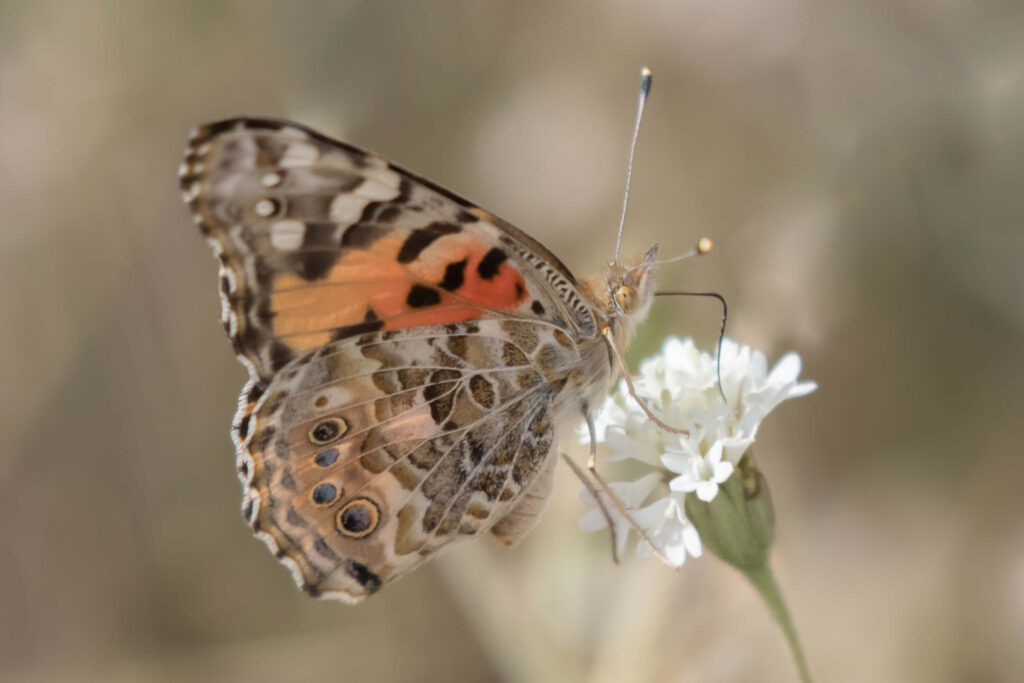
Painted lady (Vanessa cardui) is a widespread species (on five continents) whose behavior and physiology have been studied in great detail for over 100 years. Painted ladies live about two weeks and undertake a long migration. Adult butterflies feed on a large number of plants and adults can be found year-round. The undersides of the wings show a series of ocelli or eye spots.


